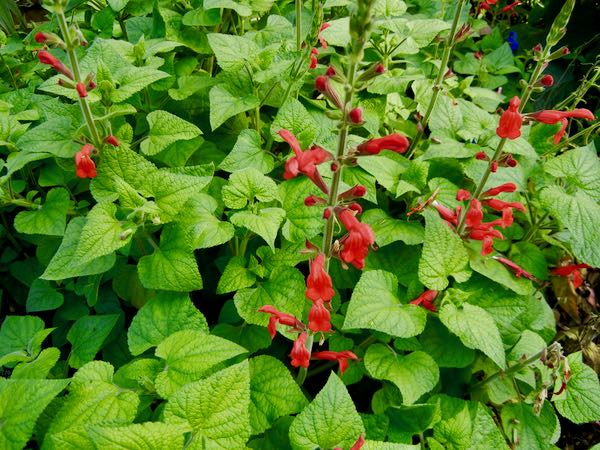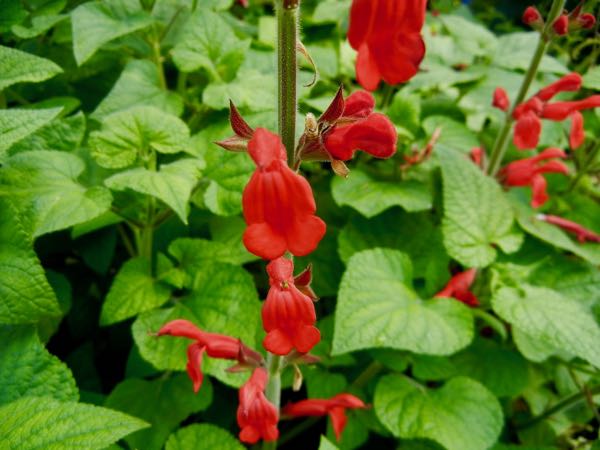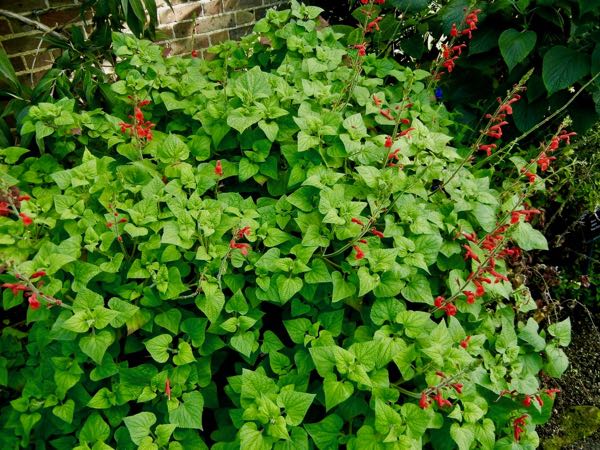Salvia darcyi: A Fiery Delight in the Garden
Salvia darcyi, also known as Darcy’s Mexican Sage, Darcy’s Sage, Fiery Sage, Galeana Red Sage, or Red Mountain Sage, belongs to the Lamiaceae family of plants. This herbaceous perennial shrub is native to Mexico, specifically in the eastern range of Mexican Sierra Madre Orientale. The species was originally discovered in 1991 and named by Dr. James Compton in honor of John D’arcy, a British botanist who made notable contributions to the field.
Description and Characteristics
Salvia darcyi is a bushy, clump-forming, and semi-evergreen shrub that adds a vibrant touch to any garden. It can reach a height of 3 feet or 90 centimeters, creating an eye-catching presence. The foliage of Salvia darcyi is medium green, sticky to the touch, and heart-shaped. Notably, the leaves emit a pleasant aromatic fragrance.
Flowers and Fragrance
During the summer and autumn seasons, Salvia darcyi produces open racemes of red flowers that captivate with their fiery hues. The bright red blooms serve as a magnet for pollinators, particularly bees, and butterflies, enhancing the ecological appeal of this plant. While the flowers do not possess a strong fragrance, the aromatic foliage of Salvia darcyi adds an extra sensory element to its overall allure.
Cultivation of Salvia darcyi:
To cultivate Salvia darcyi successfully, consider the following guidelines:
Sunlight: This plant thrives in full sun or partial shade. Choose a location that receives at least 6 hours of direct sunlight per day for optimal growth and flowering.
Watering: Salvia darcyi has a moderate water requirement and prefers regular watering. During the summer months, provide deep watering sessions, ensuring the water reaches the roots. Allow the top inch of soil to dry out between watering intervals to prevent overwatering.
Soil: Plant Salvia darcyi in moist, fertile, and well-drained soil. The addition of organic matter to the soil can improve its moisture-retaining capacity and nutrient content.
Pests and Diseases: Salvia darcyi is generally disease-free, but occasional encounters with leafhoppers, slugs, or snails may occur. Monitor the plant for any signs of pest infestation and treat accordingly with appropriate remedies.
Pruning: Pruning Salvia darcyi is not mandatory, but you may choose to trim it back in the spring to encourage new growth and maintain a compact shape. Cutting the plant back to approximately 15 cm or 6 inches in early autumn prepares it for vigorous growth in the following season.
Propagation:
Salvia darcyi can be propagated through various methods:
- Seed: While seed propagation is possible, it can be a lengthy process, with germination taking up to three months.
- Cuttings: Propagating through stem cuttings is often a more efficient method. Take 4-6 inch pieces of healthy stems, remove the bottom leaves, and dip the cut ends in rooting hormone. Plant the cuttings in a well-draining potting mix and keep the mix consistently moist. Within approximately four weeks, the cuttings should develop roots, allowing for the establishment of new Salvia darcyi plants.
Salvia darcyi can be utilized as a stunning border plant, a captivating specimen plant, or a striking addition to a container garden. Its vibrant red flowers not only enhance the visual appeal of the landscape but also attract beneficial pollinators, contributing to a flourishing ecosystem. Embrace the fiery charm of Salvia darcyi and enjoy its striking presence in your outdoor space.






